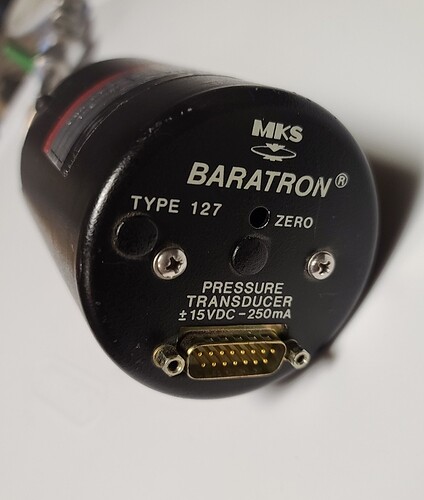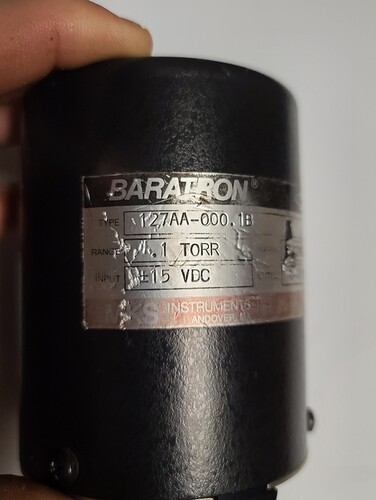The oil was also never exposed to sunlight. It was dark out when I opened the vessel. The only light it saw was from the led “warm” bulbs in my kitchen lights
This syringe was never in the sun.
Once we took it out of the light, it turned back the normal reclaim color over a short period of time. Did your colorful rig turn back to normal as well?
Yep, it’s starting to fade away for sure.
Same. Boiling points of cannabinoids are mostly known experientially by folks with lots of vacuum distillation experience.
which sucks gigantic ass because how tf do i figure out what’s currently distilling over when working with a mixture?
Sounds like something a grant should be put together for
Surprised this hasn’t been clearly laid out yet.
Wouldn’t it only require a calorimeter to figure this out?
You’d think @spdking would be the first to have a report on this subject.
have you looked at the cost for a suitable DSC?
I dont know what a suitable DSC looks like. One built for polymer chemistry would probably work. No?
probably, yeah
A better bet, in my opinion is fractional distillation in its truest form. i.e. distill at a single temperature, collect fraction, rinse/repeat.
Then characterize the separation with some analytics. Preferably LCMS
Then use a nomagraph to correlate the boiling points at the vacuum level (oh yeah, you’d have to have immensely accurate pressure control) to either room temperature or whatever of pressure of interest.
0.02$
honestly i don’t see any benefit of actual distillation over DSC. the latter usually has much finer temp control so that’s already something quite important and useful.
it only goes down to 0.1mmHg, might be problematic. i usually distill at 0.025mmHg
You can’t know boiling mixtures!
Below ref to vap. pressure of individual, high purity cannabinoids.
doi: 10.1016/j.forc.2017.06.003
Here we have the Applied Chemicals and Materials Division, National Institute of Standards and Technology measuring cannabinoid vapor pressure by head space analysis. (we discussed earlier)
There is a lot to learn here…nice estimates for MP of THC and CBD, 64.01C and 88.54 C , respectively.
The data is used to generate NBP :
" The prediction of the NBT for Δ 9-THC and CBD by three methods are presented in Table 3. Table 3 presents the NBT predicted by the PLOT-cryo experimental data (the predicted data were corrected for changes in heat capacity with the TDE software) and both the Nannoolal and the Joback group contribution methods [41–43]. "
Closest fits to Plot-cryo experimental data is the Nanoolal method of predicted NBP.
(417.25 C : 401.35 C) for THC and (421.95 C : 419.35 C) for CBD respectively.
If nothing else, cannabinoids clearly destroy our notions of well-defined boiling points.
This might be the best of what is “out there.” Working the grey.
Boiling mixtures?
Space-time “boiled” out of nothing, the ulimate mixture.
regards
Thank you for quoting the “if”…it makes a difference,
@gobstopp , This is typical oxidation of cannabinoids to quinones. There are important differences in the colors reported. Some folks call everything “purple”, but there are several shades, indicating different compounds.
On my phone (Samsung Note 10+), at least, here are some emoji to represent color differences:
These are shades of the purple (violet) color seen in some CBD quinone products ![]()
![]()
![]()
![]()
![]()
![]() , most often caused by oxidation in the presence of alkali.
, most often caused by oxidation in the presence of alkali.
These mauve shades ![]()
![]()
![]() are often mistaken for “purple”, although they are forms of red, indicating THC quinones from similar alkaline oxidizing conditions. Sometimes they are mixed with true purple
are often mistaken for “purple”, although they are forms of red, indicating THC quinones from similar alkaline oxidizing conditions. Sometimes they are mixed with true purple ![]()
![]()
![]() , indicating both CBD & THC quinones from said conditions.
, indicating both CBD & THC quinones from said conditions.
These are shades of more pure red ![]()
![]()
![]()
![]()
![]()
![]() or reddish pink:anatomical_heart:
or reddish pink:anatomical_heart:![]()
![]()
![]() often seen from higher concentrations of THC quinone products that have oxidized in air at neutral or with acid present.
often seen from higher concentrations of THC quinone products that have oxidized in air at neutral or with acid present.
These are pink to peach shades ![]()
![]()
![]()
![]()
![]()
![]() which happen sometimes in attempts to make “water clear” or intentional “rosé”, from pure THC quinone in highly colorless, neutral products.
which happen sometimes in attempts to make “water clear” or intentional “rosé”, from pure THC quinone in highly colorless, neutral products.
Reddish brown shades ![]()
![]()
![]()
![]()
![]() happen when CBD and/or THC quinones & chlorophyll are together.
happen when CBD and/or THC quinones & chlorophyll are together.
Crude brown shades ![]()
![]()
![]()
![]()
![]()
![]()
![]() and high quality crude tan colors:maté:
and high quality crude tan colors:maté:![]()
![]()
![]()
![]()
![]()
![]()
![]() are from xanthophyll yellows, carotenoid oranges, chlorophyll & other pigments, cannabino-quinoids and terpene oxides, all together.
are from xanthophyll yellows, carotenoid oranges, chlorophyll & other pigments, cannabino-quinoids and terpene oxides, all together.
These are “yellow” amber shades:orange_heart:![]()
![]()
![]()
![]()
![]()
![]()
![]()
![]()
or dark “red” amber ![]()
![]()
![]()
![]()
![]()
![]()
![]()
![]() which are carotenoids and/or yellow+red:pill:, from the xanthophylls & quinones, respectively.
which are carotenoids and/or yellow+red:pill:, from the xanthophylls & quinones, respectively.
The usual:fire:yellow/gold shades ![]()
![]()
![]()
![]()
![]()
![]()
![]()
![]()
![]()
![]()
![]()
![]()
![]()
![]()
![]()
![]()
![]()
![]()
![]()
![]()
![]() come from xanthophyll yellow pigments.
come from xanthophyll yellow pigments.
These are grayish shades seen in some water white products ![]()
![]()
![]()
![]()
![]()
![]()
![]()
![]() that have not oxidized… Too much darkness can indicate black solid particulate impurities, like charcoal, but it may also be a trick of the light refraction through different transparent solids like glass & resin.
that have not oxidized… Too much darkness can indicate black solid particulate impurities, like charcoal, but it may also be a trick of the light refraction through different transparent solids like glass & resin.
There are even rare occurrences of green & blue during processes ![]()
![]() , caused by unusual refractory characteristics of mixtures, terpene decomposition products, polymorphism in crystal structures, and other bizarre phenomena.
, caused by unusual refractory characteristics of mixtures, terpene decomposition products, polymorphism in crystal structures, and other bizarre phenomena.
Unicorns🦄 & rainbows🌈, folks!
EDIT: Yeah, the forum replacement emoji are off-colored, dang it.
You use sunlight to develop your slides?
I love that- could you share your method?


